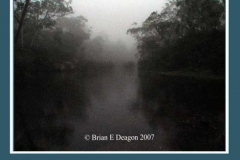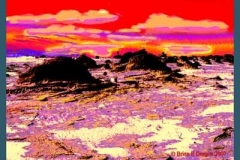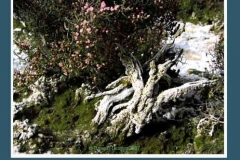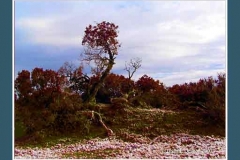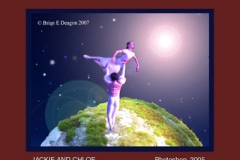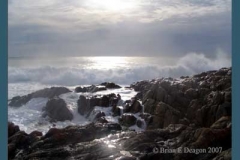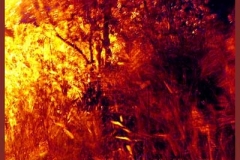Sir Kenneth Clark posits that the Classic nude is aesthetically and culturally beyond us. The completeness of rhetoric and technique are averse to our prediliction for the fragmentary and accidental. This came up again with Prof Lancaster and Hadyn. He points out that Baroque musical form is based upon the rhetorical devices of Quintillian. One states a premise,and another,then develops an argument and arrives at a conclusion. The “premise” is stated as a musical theme or idea.I assume, the same would have been applied to painting and all the other arts, particularly given the multi-arts sweep of Baroque. The wit, Professor Lancaster says, has an “aha “quality, not a “ha ha”. A large part of this would have been the conspicuous displays of erudition,linking subthemes and motifs,legends and narratives, as a commentary on the main theme or subject. Of more interest to me,is the notion that the pictorial language of pure composition must have been considered in the same way.Note that “rhetoric” here is more than “allegory” and “technique” means more than”finish”. Thats where it ended up in the worst of Salon Silliness.In Renoir’s Grand Baignuese we can see an impressionist realising that the dissolution of form itself had to be resisted in the nude, but is happily accommodated by the landscape.Renoirs painting is an argument as rhetorical as can be.
All posts by Brian Deagon
Acclamation
Why is it that a violinist can play Mozart , an actor breathes life into Shakespeare, a dancer dies as a swan yet again memorably, and all these artists receive acclaim, but if a visual artist declares ” I will now “do Rubens”, a completely different set of assumptions apply.?
I contend it is the assumptions that are misguided, and completely miss the point. If Rubens(or any other master) is my composer, my playwright,my choreographer, then judge my performance accordingly,starting with whether I know the script.
After all, if your role is to provide illustrations to,and demonstrations of, the theories and pronouncements of art critics and impenetrable French philosophers; so should your work be judged-as just that.
Related Images:
On the use of photographs
There is so much nonsense about the use of photographs, but most important is the issue of copying them. Why not use a photocopier and be done with it?
The truth is, that the camera ALWAYS lies! Shadow and light remove colour from objects,lenses distort,even the inks used in printing are only approximations. Because this is so, you must interpret,interpolate,simplify:all manner of things. The aim is not to copy the photo, but to create an illusion. Behind the illusion lies the artists knowledge or lack of it, and that is revealed as brutally as in drawing from life.
In fact, the well constructed life drawing reveals more than the photograph ever can, because the artist sees “through” the accidents of light. It is a question of the “long look” over time, which is demanded of the viewer of the drawing as well as the artist. The focus keeps moving, so that “depth of field” is constructed from myriad perspectives, not the single, fixed,lens-bound monocular vision of the camera. A similar argument appies to colour perception, where the artist reacts to after-images and simultaneous contrasts in different time contexts.
This is not to deny that the camera “sees” things we cannot normally see. It just means the camera extends our potential range of vision and subject.
Related Images:
On “Progress”
Richard Wright uses the image ” on the ladder of progress,kicking out the the rungs below us “.If this is Jacobs Ladder, what if we get to the top to discover we are not in heaven? And I use the “snakes and ladders” game to indicate that the ladder has as many unintended consequences as intended, and( commonsense with a vertical and horizontal axis resulting in four quadrants beloved of seminar presenters) some of these pleasant as well as unpleasant.. Now there’s a conceptual frame to interrogate a discourse,with. Hmm.
Related Images:
There’s no going back, But I’m going
Theres no point in silverpoint now I have a pencil, no point in lapis lazuli now I have ultramarine, no point in egg emulsion now I have acrylic and oil. But to use all of the old materials and techniques is an education in how to use the modern equivalent. I now know, because I have been there.
In “Image of the Body” Michael Gill makes the observation that the same desire to record every detail produced double entry bookkeeping accounts and Florentine art. It makes sense that the patrons of the C15 should bring the same attitudes to Art as they did to business.
And I have mused about the cultures that tend to Realism before. The Dutch invented the stock market and exported it to Boston and New York. Academic Realism that Americans preserve from C19 English Empire and C19 French, has the same love of detailed “finish”. They bring the same aesthetic to the nude as they do to chrome automobiles.
This weakness is to be avoided. That does not mean that the whole style is to be avoided.For me, the brushmark must finally be triumphant, and that is why Rubens is a touchstone
Related Images:
Painting and the Art of Football
I am sure the commentator had been watching ME.
I had the Australian Football League (AFL) radio commentary on last Saturday as I worked on a painting of three nudes…I was concentrating on the central figure who had her back to me, and was trying to get the highlights on her bottom correct. This is what I heard as I worked.
“ What a mark! He has flown right above the pack to bring that one in,but now he moves back….its a difficult angle,but should be able to convert it from here….sizes it up….its within his range……he has the ability ….. confidence is high…..moves in …….very deliberately….there it goes..…..aaaand….
It’s a behind!
Brian E Deagon
Thursday November 10th, 2011 10:04 am
Related Images:
What do you use?
An artist was explaining that they used enamel paint , a stick, cardboard cartons and sand to do their drawings, and asked ” What do you use?”
I replied, ” My brain”
Whenever they find out I am a teacher they ask” What do you teach?” I always reply ” Mostly people” This always results in consternation.
Related Images:
Florence comes to Brisbane
I find it very encouraging to be working with a group of young artists who are determined to master the traditional crafts of art. Working in “oil clay” or plasticene sculpture, and using the academic palette on very long poses in painting and drawing, they are an impressive bunch. I am flattered to be asked to work with them. They know of Lance Bressow, have studied in Florence,and Julian Ashtons .Oct 2009. We work in the Sculptors Society shed behind the old Museum.
An update Mar 2010. Scott, Ryan, Nick have built 10 studios in a warehouse at Salisbury , and the model takes the pose all day Saturday for 5 weeks.
My desire to pursue Rubens and Bougereau has not abated. High definition images on the net, study in Boston , and my own researches are taking me closer. Its frightening. What do I do when I get there? Same old problem, and yet study of “The Body” in art institutions is everywhere.
Related Images:
See it my way
Ever notice how much painting language we use?
“from my point of view” ” look at the big picture” “keep it at arms length” ” the point to focus on” ” try another perspective” “keep it in the frame” “throws a different light” “from my standpoint”
Related Images:
Venus restored
Saw Kay Kane exhibition at QCA on Saturday 20th March 2010. Some very good life drawings which had been incorporated into a large 7? panel mural. The nudes were set in the landscape at Springbrook. Quite beautiful but puzzling.
Why only female figures? Why is noone smiling? Only one figure looks at the viewer. Its all very democratic or egalitarian with no figure dominating as traditionally Venus would be acompanied by her attendants and admirers, as would befit a goddess who mirrored the social status of a Queen or royal figure. But can all be Venus? And how can the Goddess of Love ( and lets face it-sex) be fulfilled without a male admirer, even if implied in the viewer?
But, its got me thinking.
